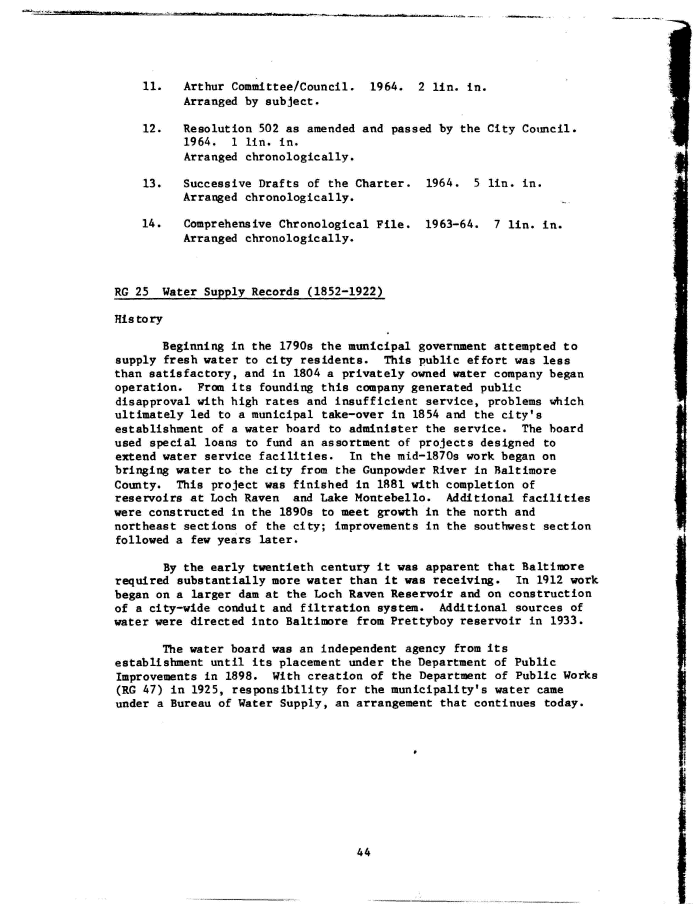|
11. Arthur Committee/Council. 1964. 2 lin. in.
Arranged by subject.
12. Resolution 502 as amended and passed by the City Council
1964. 1 lin. in.
Arranged chronologically.
13. Successive Drafts of the Charter. 1964. 5 lin. in.
Arranged chronologically.
14. Comprehensive Chronological File. 1963-64. 7 lin. in.
Arranged chronologically.
RG 25 Water Supply Records (1852-1922)
History
Beginning in the 1790s the municipal government attempted to
supply fresh water to city residents. This public effort was less
than satisfactory, and in 1804 a privately owned water company began
operation. From its founding this company generated public
disapproval with high rates and insufficient service, problems which
ultimately led to a municipal take-over in 1854 and the city's
establishment of a water board to administer the service. The board
used special loans to fund an assortment of projects designed to
extend water service facilities. In the mid-1870s work began on
bringing water to the city from the Gunpowder River in Baltimore
County. This project was finished in 1881 with completion of
reservoirs at Loch Raven and Lake Montebello. Additional facilities
were constructed in the 1890s to meet growth in the north and
northeast sections of the city; improvements in the southwest section
followed a few years later.
By the early twentieth century it was apparent that Baltimore
required substantially more water than it was receiving. In 1912 work
began on a larger dam at the Loch Raven Reservoir and on construction
of a city-wide conduit and filtration system. Additional sources of
water were directed into Baltimore from Prettyboy reservoir in 1933.
The water board was an independent agency from its
establishment until its placement under the Department of Public
Improvements in 1898. With creation of the Department of Public Works
(RG 47) in 1925, responsibility for the municipality's water came
under a Bureau of Water Supply, an arrangement that continues today.
44
|

